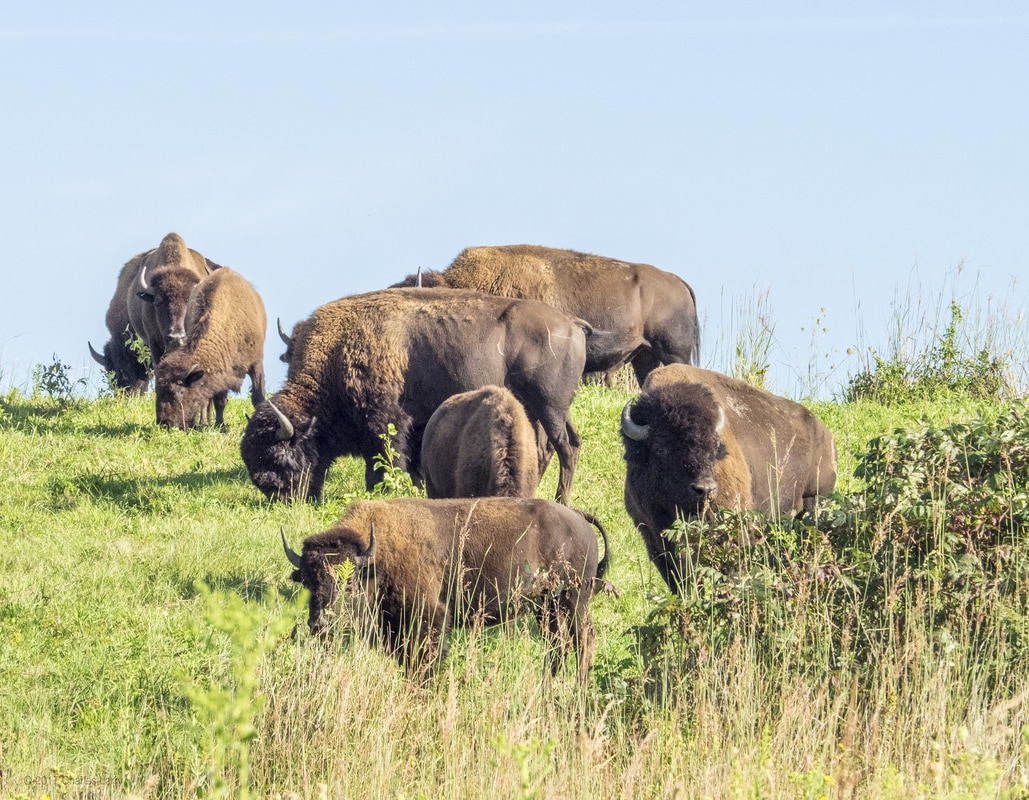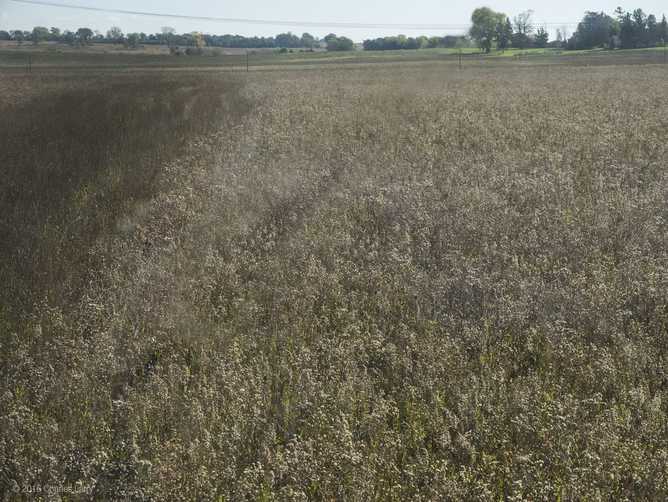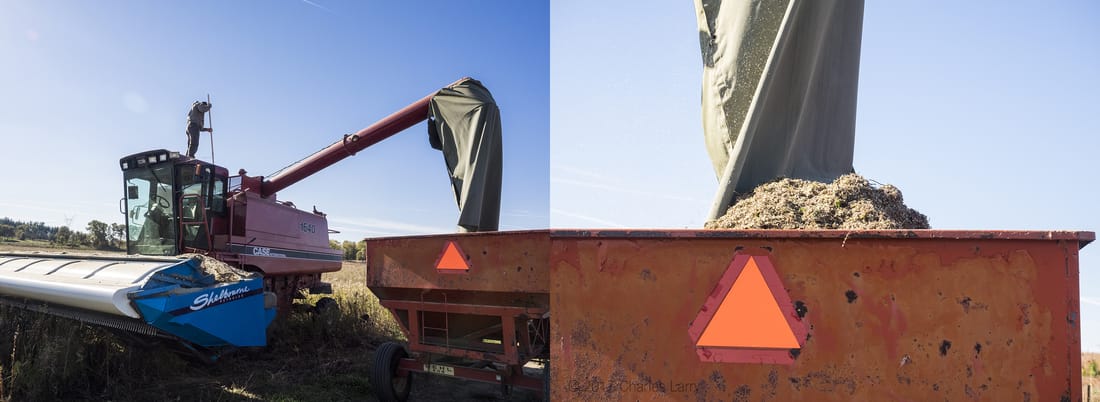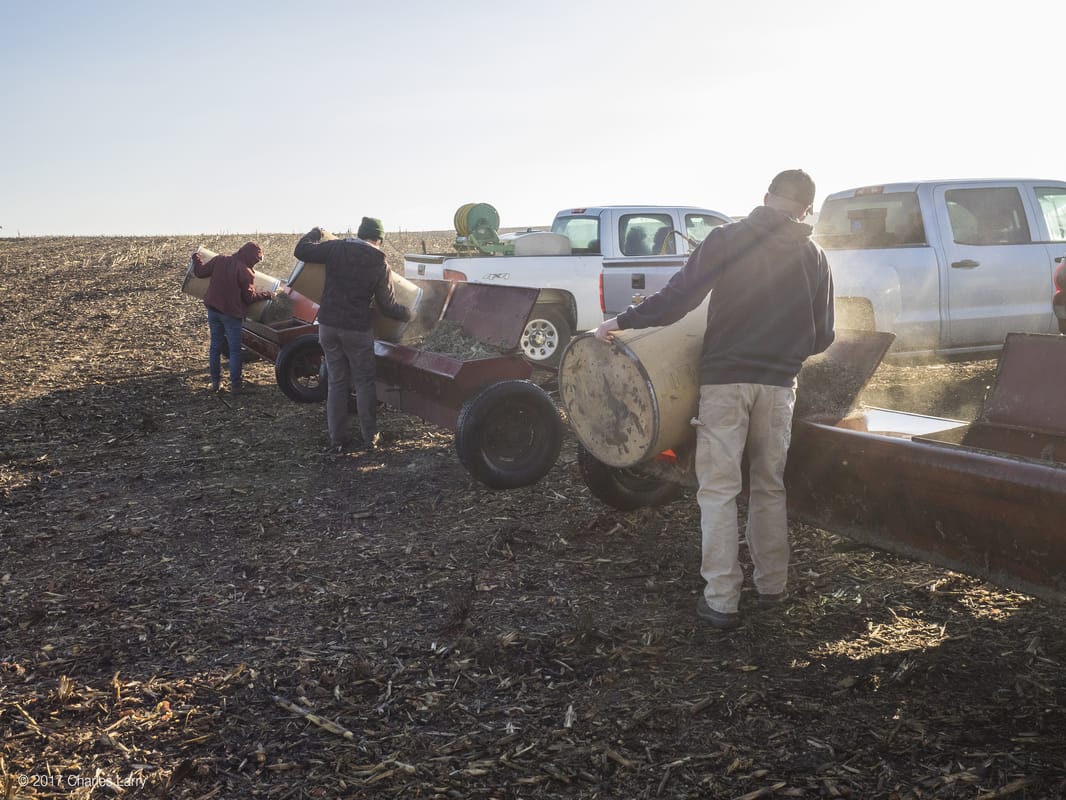|
A seed on the wind as it travels alone, does it feel isolation as it looks for a home? The breeze carries it aloft and sometimes quite high, will it land in a spot that is wet or quite dry? Will the conditions it lands in meet all of its needs, or would its chances have been better on an easterly breeze? Of seeds born to the wind there must be many, so at least a few make it to the land of seed plenty. Where a cycle of freeze and thaw is step one, for the seed to sprout it will need good soil and sun. Bright orange flames of fire flicker on thatch, to soon leave the prairie a charcoal black patch. Down came the rain, it fell all around, it loosened the soil and moistened the ground. Forbs and grasses of green cover the black, this seed found a home where the cover does lack. Grazing the grass fills bison need, allows warmth and the sun down to this little seed. From that seed emerged a tiny green shoot, that soon put down a nice little root. The bison that graze the grasses down low, add nutrients and microbes that help the plant grow. In the place where this little seed did land, a plant of its species does now stand. The new root has grown and is now very deep, so that this plant can survive a long winters sleep. In the spring, the plant will grow to be tall, it will flower this summer, and set seed in the fall. When the fall breeze blows, the seed will take to the air, hoping to land on good ground that is bare. Where can one find this wondrous glory? At a place called Nachusa, that inspired this story! This poem was written by Paul Swanson, a volunteer at Nachusa Grasslands.
Photos courtesy of Dee Hudson and Charles Larry.
6 Comments
Seeds! That essential element of prairie restoration, seeds are hand gathered and then planted by stewards, volunteers, and crew over hundreds of acres at Nachusa Grasslands each year. Gathering seeds by hand assures that only the right, ready, and wanted species are collected. But there is another method of seed harvesting and planting utilized at Nachusa: mechanized, with combine and broadcast seeders. With a combine, very large areas of seeds can be gathered in a very short time. In 2016, the Nachusa crew hand collected about 4000 lbs. of seed, while combining yielded about 20,000 lbs. Combining is not as precise a method as hand gathering and will retrieve the seeds of everything in its path, including weeds. This is minimized by carefully monitoring the path of the combine and either driving around an area of unwanted seeds or by disengaging the combine head. The photo above shows a field which yielded a variety of seeds: Big and Little Bluestem; Indian Grass; Smooth, Sky Blue, and Silky Asters; Old Field, Missouri, and Showy Goldenrod; Rough Blazing Star; Round–headed Bush Clover; and Pale Purple Coneflower, among others. The advantage of this method, in addition to large-scale collecting, is that it frees the crew to concentrate on rare, harder to collect seeds, such as from those plants that are too low to the ground to gather by combining. Combines can operate with different types of heads (front part of combine) for harvesting various grains and seeds. Nachusa's combine uses a rice-stripping head. The metal "fingers" (photo above) spin very fast, stripping seeds off each stem. This is much more efficient and collects less chaff compared to using a soybean head, which cuts and harvests the stems along with the seeds. The combine has also been further modified: the fans have been turned off and the top of the stripping head has been covered with a wire screen to minimize the loss of the fine, fluffy seeds. Because the special head brings in very little chaff, the seeds can be directly planted without going through the hammermill. After drying, the seed collected by combining is mostly given to conservation partners of Nachusa Grasslands, such as Byron Forest Preserve, Natural Land Institute, and Franklin Creek State Natural Area. Some of the seed is used to supplement the seed hand gathered by stewards and crew. Some of the seed is used to plant areas that were recently cleared of brush. This 103-acre field is much too large an area to plant by hand. The crew fills antique broadcast seeders with a mixture of the combine-gathered seed and hand-gathered seed. The broadcast seeders, attached to the back of trucks, are then driven over the field, again and again, spreading the seed. There are many factors that filter into a successful restoration. Weather, of course, is one factor. Often, after an initial planting, there are places where growth is sparse. Overseeding is done, sometimes over several years, to help increase growth and also to add more diverse plants. Diligent weeding is also done to eradicate unwanted and invasive species. New plantings are often burned on a yearly basis for a few years to help with weed control and encourage native species growth. Nachusa's staff and volunteers have gone through this process of collecting and planting prairies over 120 times within the past 30 years. After many years of care and hard work, a beautifully restored prairie may bloom. This blog was written by Charles Larry, volunteer and photographer at Nachusa. To see more of his images, see: charleslarryphotography.zenfolio.com
|
Blog CoordinatorDee Hudson
I am a nature photographer, a freelance graphic designer, and steward at Nachusa's Thelma Carpenter Prairie. I have taken photos for Nachusa since 2012. EditorJames Higby
I have been a high school French teacher, registered piano technician, and librarian. In retirement I am a volunteer historian at Lee County Historical and Genealogical Society. Categories
All
Archives
January 2024
|
CONNECT WITH US |
|


















 RSS Feed
RSS Feed